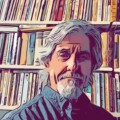Spotlight on photographer Ryan Tischer
Some of Ryan Tischer’s distinctive photography is as breathtaking as his subject matter. Currently he is the gallery committee chair at Washington Galleries, responsible for organizing and running meetings, working with artists to put on exhibits in the gallery, and finding new artists interested in exhibiting.
In addition, he’s a member of the board of directors at Washington Studios, which oversees all other committees and passes the annual budget. From early 2010 through the end of 2011, he served as president of the board as well.
EN: When did you first take an interest in photography? Who or what were your influences?
RT: I started getting interested in photography during my senior year of high school, shooting for the Carlton Community Newspaper and high school yearbook. I was encouraged to pursue my interest by my high school photography and industrial arts teacher, Tom Branlund. Like a lot of people who are new to photography, I started by shooting all sorts of different photographs (digital, B&W film, color film) and experimented with subject matter as well (portraits, sports/action, candid, nature/landscape). Eventually, I found I was drawn most to natural landscapes and preferred to work with a digital single lens reflex. I bought my first DSLR (a Nikon D70) in 2004 with the money from my graduation party.
EN: What is the difference between “art photography” and the kind of photos regular people take for Facebook and home photo albums?
RT: Art photography has a lot more thought process and vision that goes into it. It takes preparation, and much of the time artists are trying to create an emotional response or get some sort of message across to the viewer. Basically, they aren’t just snapshots taken on a whim. Even looking at great photo journalism, where many images are “snapshots,” there’s still a lot of preparation that goes into making the images. For example, being in the right place at the right time and knowing your subjects well.
EN: When did you become serious about doing photography professionally as an artist?
RT: I started doing art festivals in 2006, and by 2007 I realized that people really seemed to like my work and were willing to pay me money for it. At the end of 2007 I finished up college, and like many recent graduates felt a little lost in terms of wondering what in the world I was going to do for a living. Based on the small amount of success I’d had doing art festivals, I decided to give it a go full-time with my art in 2008. It wasn’t easy making money in 2008—what a terrible year to get started in any business! Basically, I just worked really hard, doing about 45 shows in 2008, trying to improve my body of work and presentation with each show I did. To save money I slept in my cargo van and camped much of the time. Over the 4th of July weekend, I remember doing three shows in three days. I was pretty beat after that, and joke that to this day I’m still tired from that weekend!
In August of 2008 we moved into Washington Studios, which gave me the space I needed to take on much more of the printing and framing end of my work. That helped make my business more profitable, and by the end of 2008 I had managed to buy more equipment to help my business grow and had just enough left over to pay the rent and buy some food. My business and art have grown each year since then.
EN: What do you look for in a photo subject?
RT: First I like to search for locations that offer a strong composition and have something unique about them. Then it’s a matter of returning time and time again until I get the unique mood and magical light that I’m looking for. It’s pretty rare that I stumble upon a location for the first time and there also happens to be ideal light.
EN: Who have been your biggest influences in your life and art?
RT: My fiancé Aimee has always been supportive of my art and was the first person to encourage me to try an art show. As for photographers who inspire me, I think that Jim Brandenburg’s work is incredible. Good nature photographers sometimes capture great landscape images and others capture great wildlife imagery, but Jim Brandenburg’s most memorable images capture both at once. The image that always comes to mind for me is his image of a lone wolf jumping across Arctic water onto an iceberg.
